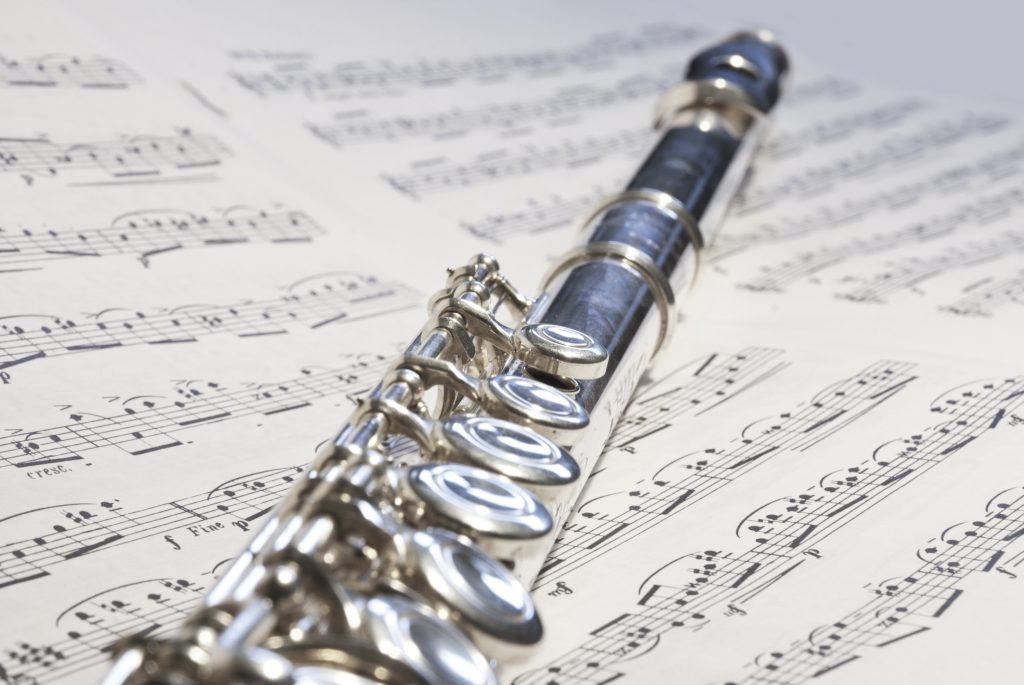Exploring Extended Techniques on the Flute
25th July 2025The flute is often associated with elegance, clarity, and soaring melodies – but there’s a whole world beyond the standard classical tone. Extended techniques push the boundaries of what the flute can do, opening up an exciting palette of sounds and effects. Whether you’re a curious student, a composer, or a flautist looking to expand your expressive range, these techniques offer new ways to interact with your instrument.
Let’s take a look at some of the most exciting extended techniques, and listen to Thom Conroy’s amazing demonstrations!

1. Flutter Tonguing
What it is: A growling, rolling effect created by fluttering the tongue (like rolling an “R”) while playing a note.
How to do it: Use the same technique you’d use to roll an “R” in Spanish or Italian. While sustaining a note, engage the tongue in that rapid fluttering motion. The result is a raspy, buzzing trill sound layered on top of your tone.
Tip: If tongue fluttering doesn’t come naturally, try throat fluttering – growling in your throat like a cat. It produces a similar effect and can be easier for some players.
Watch flautist Thom Conroy demonstrating flutter tonguing all these techniques in our short video below:
2. Singing While Playing
What it is: Producing a sung pitch while simultaneously blowing into the flute.
Why it’s cool: This creates complex overtones and fascinating interference patterns – like a duet between your voice and your instrument.
How to do it: Choose a pitch to sing (often a third or fifth away from your flute note), and while playing, vocalise the sung pitch. It can be disorienting at first – your brain wants to prioritise either singing or blowing, or singing the same pitch you are playing, – but with practice, the coordination gets easier.
Pro tip: Start with small intervals and work up. Try scales where the flute ascends while your voice descends.
3. Multiphonics
What it is: Playing two (or more) pitches at once.
How it works: Certain note combinations, played with alternate fingerings and embouchure adjustments, can produce multiple simultaneous pitches or complex textures.
Note: These sounds are more about colour and texture than traditional harmony. Embrace the unpredictability!
Beginner-Friendly Multiphonic Fingerings
1. Multiphonic: D + F
Fingering: Start with the standard fingering for low F, but add both trill keys (right-hand 1st and 2nd trill keys).
- Left hand: Thumb, 1, 2, 3
- Right hand: 1, 2, 3 + both trill keys + pinky

How to play it: Use a gentle, steady airstream and slightly relaxed embouchure. If you blow too hard or too focused, it may just crack or jump octaves.
2. Multiphonic: B + G
Fingering:
- Left hand: 2, 3
- Right hand: 1, 2 + 1st trill key

How to play it: This one responds well to a slightly angled airstream and a loose embouchure. Focus on keeping your air warm and unfocused – it’s a subtle balance between tone and turbulence.
Tips for Success:
- Start by finding the individual harmonics using the multiphonic fingerings. Once you’re comfortable locating the notes, work toward sounding both simultaneously.
- Don’t expect clean intervals – listen for beating, interference, or tonal ‘smudging’. Recording yourself can help you catch subtle details.
- Small adjustments in embouchure or air direction make a big difference. Tune the lower note with your throat, and shape the upper note with your top lip. Keep your breath steady – avoid overblowing or backing off to force the harmonics out.
4. Beatboxing on the Flute
What it is: Using your breath, lips, tongue, and voice to imitate drum and percussion sounds – while still playing notes on the flute.
Basic sounds:
- “Pff” for kick drum
- “Tkah” for snare
- “Kuh” for hi-hats
Add notes between these sounds to create rhythmic grooves.
Why it’s fun: It’s rhythmic, percussive, and incredibly performative. Great for engaging audiences and exploring your own rhythmic creativity.
5. Jet Whistle
What it is: A loud, explosive rush of air through the flute – like a sonic boom.
How to play it: Cover the embouchure hole completely with your lips, then blow a fast, intense burst of air through the flute while rapidly fingering notes ascending (usually ending on a high note like D or E). The result is a high-pressure whoosh or scream.
Final Thoughts
Extended techniques aren’t just party tricks – they expand the flute’s expressive range and challenge us to think differently about sound. These tools offer endless creative possibilities and can enhance your musical storytelling.